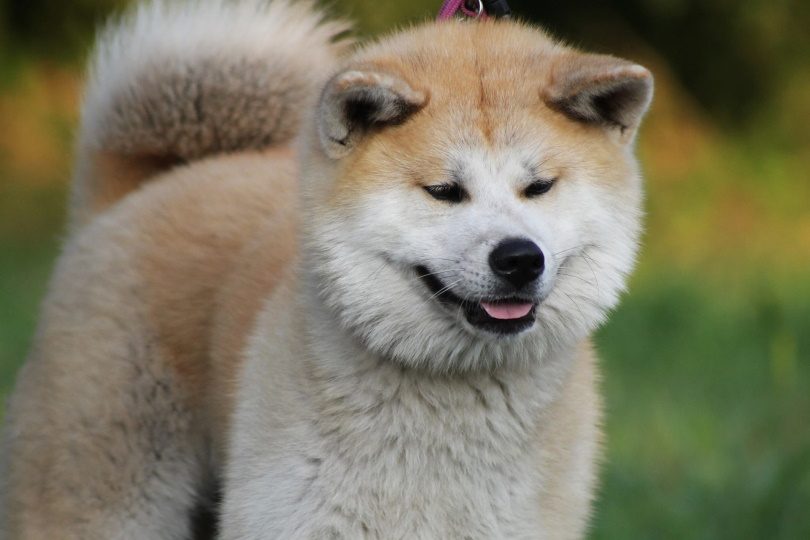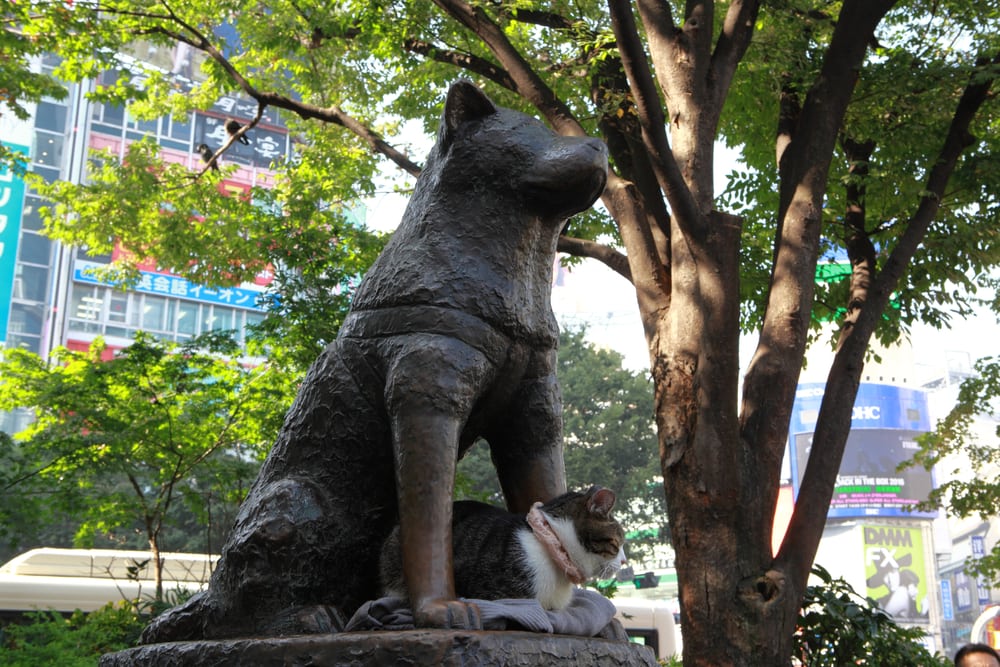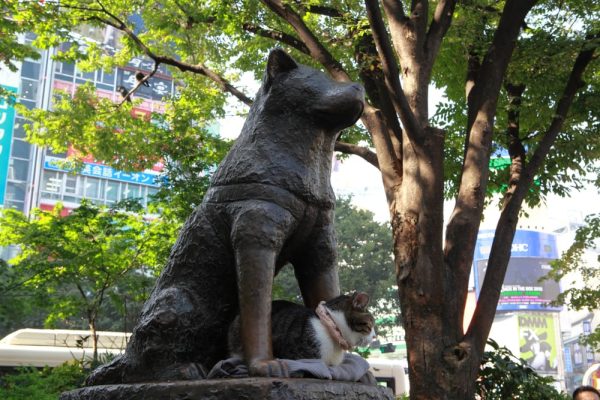For most of us, when we hear the name Hachi, only one thing comes to mind. Hachi is a devoted Japanese Akita Inu that brought us all to tears in the movie “Hachi: A Dog’s Tale.” The movie is a true story and leads to the popularity of the breed outside of Japan.
Akita Inu
The Japanese Akita Inu is a well-proportioned, solid, and powerful dog. They are muscular and strong with a fox-type head. The chest is broad, and the back is level. The dog is a large breed with a short, thick, double coat that sheds heavily twice a year. Their ears are slightly angled and triangular-shaped. The distinct physical characteristics make this attractive breed easily recognizable.
The Akita Inu is not a pet for the timid. They are fearless, intelligent, courageous, and docile. They tend to be spontaneous, so they need a strong, consistent leader. Without consistency and a firm, confident leader, the breed may be aggressive toward other animals, including other dogs. Akitas that are trained properly and know their place in the pack make affectionate and loyal pets. They are strong-willed and will require a bit of patience, however.
The Akita Inu originated in the mountainous region of Japan. They were bred for hunting and fighting. The breed was trained to hunt brown bears, elk, and wild boar. In the 1600s, the Japanese used Akitas for dog fighting, which was popular in Japan. The Akita Inu is considered the national dog of Japan. They are used for military work, for guard dogs, and police work.
Akitas have a lifespan of 11 to 15 years. The breed is known to have some health problems, however. They include orthopedic problems, bloat, cancer, progressive retinal atrophy, and autoimmune diseases.
Akitas do not mind the cold and snow—they enjoy it. They are not hyper and do not require hours of exercise. A half-hour walk, or freedom to run in a fence in the yard will do. If you take them to the park or for a walk, putting them on a leash may be in order. They can be aggressive toward other animals and aloof to other people.
In the country of Japan, the breed is considered good luck and sacred. Small statues of the Akita Inu are given to parents of newborns and people that are ill. The gift is a gesture of good health and a quick recovery.
In 1937, Helen Keller brought the first Akita from Japan to the United States. Kamikaze-go was given to her when she visited Akita Prefecture. Shortly after she adopted Kamikaze-go, he died of distemper. In 1938, the Japanese government gifted Helen Kenzan-go, the older brother of Kamikaze-go.
Servicemen from World War II began bringing the Akita Inu to the United States after World War II.

Akita Inu Cross-Breeds
- Bulkita: Akita Inu and an American Bulldog
- Golden Akita: Akita Inu and a Golden Retriever
- Huskita: Akita Inu and a Siberian Husky
- Nekita: Akita Inu and a Neapolitan Mastiff
- Shepkita: Akita Inu and a German Shepherd
- Boxita: Akita Inu and a Boxer
- Labrakita: Akita Inu and Labrador Retriever
- Aki-Poo: Akita Inu and a Poodle
Who Is Hachi?
If you have never seen or heard of the movie, it is a true story about an Akita Inu that went to the Shibuya Train Station at the same time every day for ten years. He sat and waited for his owner to return from work, even after the owner died. He was named “Hachiko,” Japan’s most loyal dog.
After Hachi’s death in 1935, a bronze statue of Hachiko was erected in the place where he would wait for his master to come home.

Interesting Facts About Hachiko
- On November 10, 1923, he was born in Odate City in Akita Prefecture. He was purchased by a scientist at the University of Tokyo. He named the pup Hachi after the number eight. The Japanese consider the number to be lucky. The “ko” in Hachiko was added to the name later.
- Individuals and companies donated money to build a memorial of a fictional reunion between Hachi and his owner.
- After the death of his owner, Ueno, Hachi was given away and placed in homes far away from Shibuya. He would run away to the train station every day. Fortunately, Kikuzaburo Kobayashi, Ueno’s former gardener, took him into his home. He lived close to Shibuya so Hachi could go to the train station every day. There are stories of Hachi being bullied and beaten by children and adults while he was waiting patiently for Ueno to come home.
- Hachi became famous when an article about the mistreatment of the dog was published in the Asahi Shimbun newspaper. Touched by the story, readers wanted to show respect for his loyalty. Shortly after, the “ko” was placed at the end of his name. He then became “Hachiko.”
- The sculpture of Hachiko was created by Teru Ando. The statue was finished quickly (before Hachiko’s death) to prevent scammers from making money on the creation. Hachiko was at the opening of the statute in his honor.
Summing Up
While the Japanese Akita Inu is an intelligent and strong-willed breed, their loyalty and devotion are like no other. If you give the dog consistency and patience, you will gain a companion for life. The breed will give you and your family love and joy for years to come. If you visit Japan, there is a small museum, Akitainu Hozonkai, dedicated to the Akita Inu in Odate City, Tokyo.
Featured Image Credit: Malen Billoni Ahumada, Pixabay












